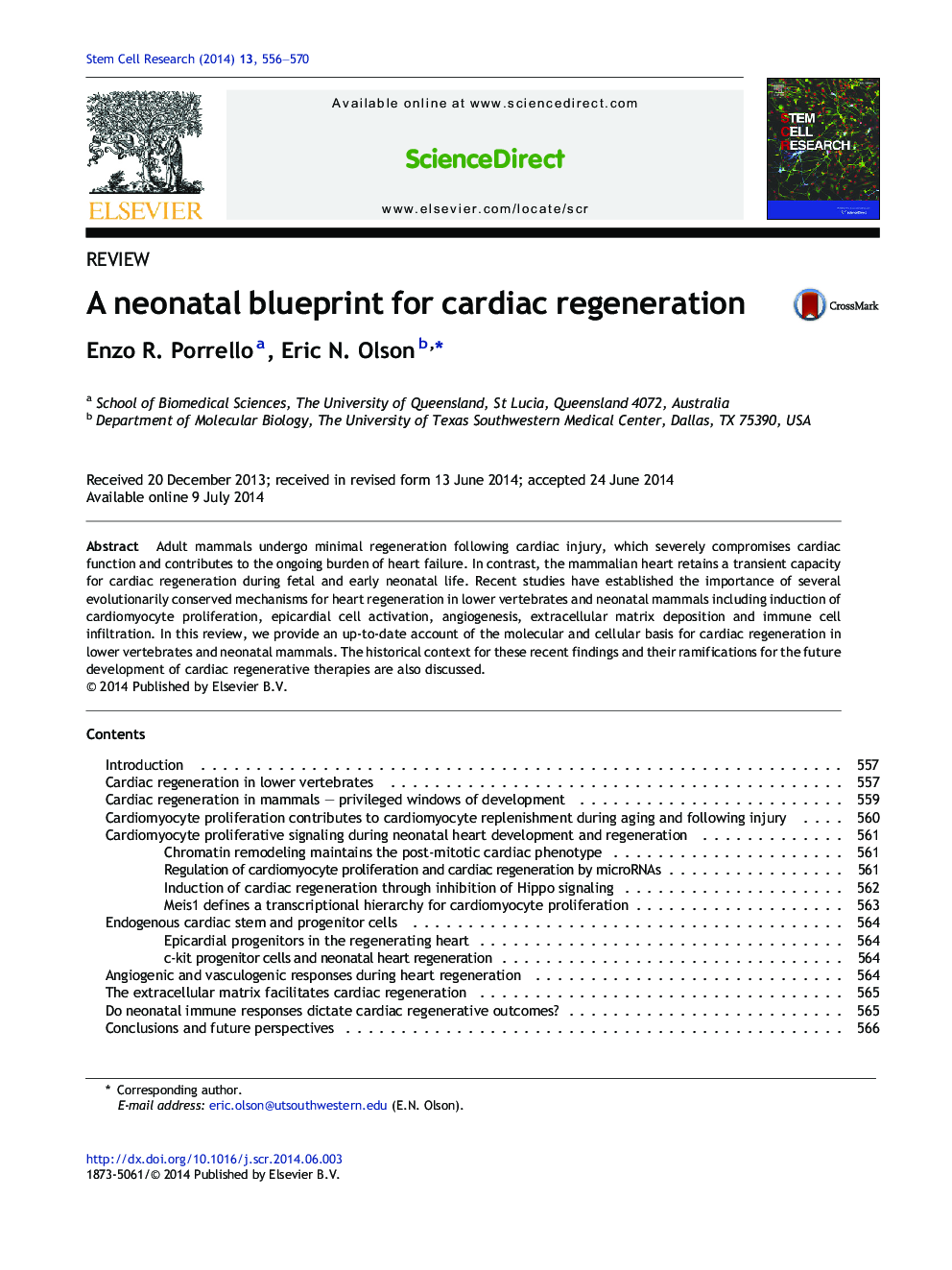| Article ID | Journal | Published Year | Pages | File Type |
|---|---|---|---|---|
| 2094468 | Stem Cell Research | 2014 | 15 Pages |
•Neonatal mice regenerate following cardiac injury.•Neonatal heart regeneration occurs through cardiomyocyte proliferation.•Cardiomyocyte proliferation is regulated by the miR-15 family, Yap and Meis1.•Macrophages are required for neonatal heart regeneration.
Adult mammals undergo minimal regeneration following cardiac injury, which severely compromises cardiac function and contributes to the ongoing burden of heart failure. In contrast, the mammalian heart retains a transient capacity for cardiac regeneration during fetal and early neonatal life. Recent studies have established the importance of several evolutionarily conserved mechanisms for heart regeneration in lower vertebrates and neonatal mammals including induction of cardiomyocyte proliferation, epicardial cell activation, angiogenesis, extracellular matrix deposition and immune cell infiltration. In this review, we provide an up-to-date account of the molecular and cellular basis for cardiac regeneration in lower vertebrates and neonatal mammals. The historical context for these recent findings and their ramifications for the future development of cardiac regenerative therapies are also discussed.
